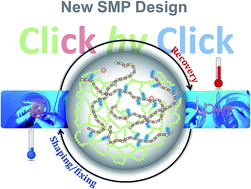New design of highly homogeneous photopolymer networks for shape memory materials†
Abstract
A shape memory polymer (SMP) based on diacrylates and primary diamines was designed by ingeniously sequencing double click aza-Michael addition and radical photopolymerization. The chemical approach lies in an additional crosslinking of 2-step based poly(amino ester)–poly(acrylate)s thus, resulting in enhanced polymer network homogeneity and thermomechanical properties. Photopolymers exhibiting excellent shape fixity and recovery within a narrow temperature range were achieved.


 Please wait while we load your content...
Please wait while we load your content...